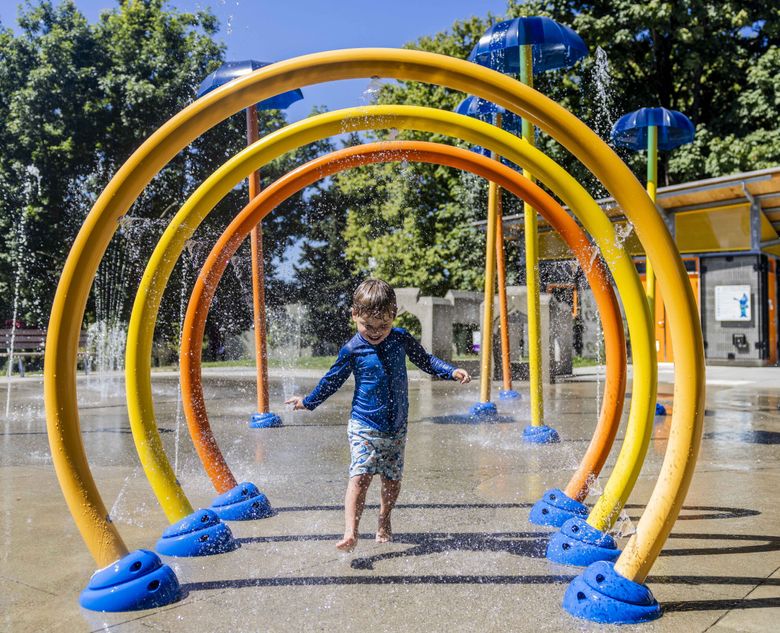
Some relief from excessive heat is expected to reach the region in the coming days, though high temperatures and fire risks will stay.
While an upper-level trough pattern is expected to bring some water to the region going into Sunday and Monday, it’s likely that will be confined to the Cascades, said Harrison Rademacher, a meteorologist for the National Weather Service in Seattle.
The dangerously hot conditions this week, particularly for unhoused people and outdoor workers, brought on an excessive heat warning to the region that remained in effect through Wednesday. That warning was expected to shift to a heat advisory through Thursday.
The coast began to feel the cooling effects of onshore flow from the Pacific on Wednesday, but the heat wave persisted farther inland, and meteorologists expected highs in the upper 80s to low 90s on Thursday.
Thursday night will be a little cooler than previous nights, with lows in the 60s, according to the weather service.
Temperatures will fall a bit more on Friday, with an estimated high in the 70s and overnight lows in the mid-50s.
“Friday’s the best day for some relief,” Rademacher said.
This weekend: More highs in the 80s and lows in the 50s, the weather service predicts.
“So that should feel a lot better than it’s been the past couple days,” Rademacher said.
However, he noted, fire risks remain.
The state Department of Natural Resources has recorded 1,259 fires in Washington this year so far, burning an estimated 110,500 acres — more than 172 square miles — according to spokesperson Joe Smillie, who noted numbers are fairly similar to previous years.
He said there was an increased concern over quick spread of wildfires given dry conditions and the expected cold front that will bring winds into the region.
Washington’s largest active wildfire, the Sourdough fire in the North Cascades, neared 3,000 acres Wednesday evening and was 11% contained, according to the Northwest Interagency Coordination Center.
At least four other fires were burning in the North Cascades on Wednesday, including one that had grown to 750 acres, according to the U.S. Forest Service. All of them were in very remote areas.
In Lakewood, some residents were briefly asked to evacuate Wednesday afternoon due to a brush fire that ignited in Fort Steilacoom Park, threatening nearby homes.
Seattle and King County upgraded their burn bans to Level 2 on Tuesday, prohibiting all outdoor fires, including for recreational uses like fire pits. Devices such as barbecues and patio warmers are still allowed under the ban. Approved fuel devices — including those that rely on charcoal, natural gas or propane — are also allowed.
At Mount Rainier National Park, a parkwide burn ban will be in full swing Friday for all campfires, wood ignition or fuel fires in an attempt to reduce human-caused fires. A complete burn ban was also in place for Mount Baker-Snoqualmie National Forest, beginning Friday.
Fires have been on the rise in the West this week, said Kit Moffitt, deputy fire staff officer with the Forest Service, in a statement. Moffitt emphasized that people should follow fire restrictions, especially since resources to respond have been stretched thin.
“Locally, fuels are nearing record dryness for the time of the year, and weather conditions are encouraging rapid growth of existing fires and any new starts,” Moffitt said.
Seattle Times staff reporter Vonnai Phair contributed to this story.
"though" - Google News
August 17, 2023 at 08:00PM
https://ift.tt/MXF3HnI
Incoming weather offers some relief, though fire risks remain - The Seattle Times
"though" - Google News
https://ift.tt/4CLJkdl
https://ift.tt/uozHpTL
Bagikan Berita Ini

















The opinions expressed in reader comments are those of the author only and do not reflect the opinions of The Seattle Times.